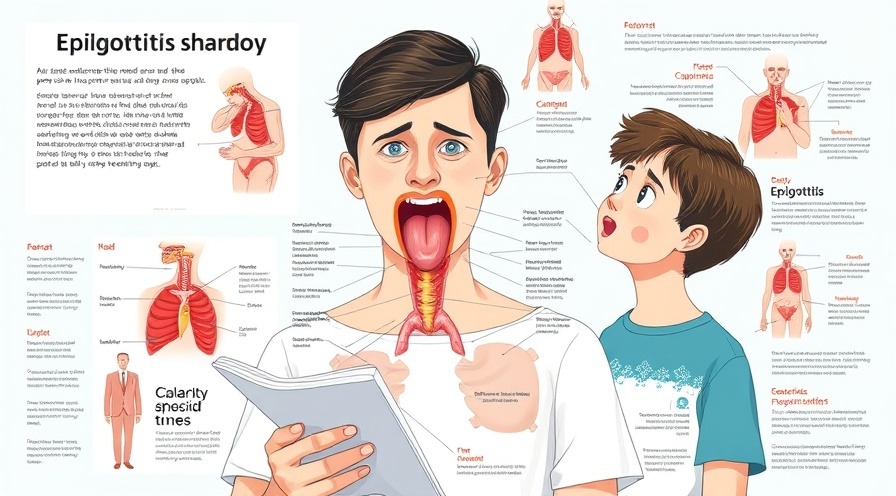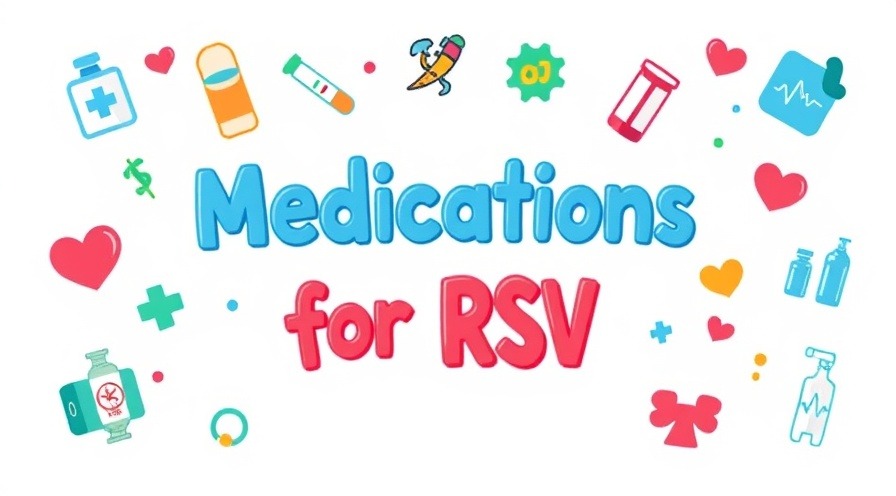
Understanding Epiglottitis: A Growing Concern for Parents
When parents bring their children into the emergency room (ER) exhibiting symptoms like a fever and sore throat, it’s crucial to recognize potential conditions like epiglottitis. This inflammation of the epiglottis, which helps keep the airway clear, can escalate quickly and pose serious health threats. While it commonly affects children aged 2 to 5, it can also occur across different ages, predominantly impacting males and those with weakened immune systems.
In 'Epiglottitis: Nursing Process (ADPIE)', the urgency of medical response and management of this complex condition are analyzed, prompting us to explore its implications for parents and health-conscious adults.
Recognizing the Signs: The Importance of Early Intervention
As in the case of 5-year-old Eve Vu, parents need to be alert to signs such as irritability, refusal to drink, and drooling. These symptoms indicate a potential airway obstruction, prompting immediate medical attention. Diagnosis is typically facilitated by a thorough medical history combined with physical examination techniques, including imaging tests like lateral neck X-rays. Importantly, healthcare professionals must balance effective assessment while minimizing anxiety, especially in young patients.
Know the Causes: From Bacteria to Non-Infectious Sources
Historically, epiglottitis was often linked to infections like Haemophilus influenzae type B (Hib); however, the incidence has diminished due to the Hib vaccine. Currently, Streptococcus pneumoniae and Staphylococcus aureus are among the leading culprits. Nonetheless, it's essential to note that non-infectious causes such as hot foods, smoke inhalation, and foreign bodies can also lead to this condition. Parents should stay informed about these risks and be cautious around choking hazards and irritants.
The Role of Effective Communication During Emergencies
In Eve's case, the rapid response involved administering oxygen and connecting her to vital monitoring equipment, but beyond the clinical side, effective communication with Eve's mother was pivotal. Providing reassurance, updating her on procedures, and discussing the treatment plan are critical components of managing parental stress during pediatric emergencies. Every parent desires to understand what their child is experiencing and how best they can help.

Aftercare: Ensuring the Best Possible Outcome for Young Patients
Once the immediate threat of airway obstruction has been managed, the focus turns to the patient's recovery. For Eve, that included intubation for mechanical ventilation and the administration of antibiotics and IV fluids. Monitoring the patient’s status continually, including hydration levels and respiratory function, is essential. Education surrounding the child’s diagnosis and recovery process plays a vital role, enabling families to navigate the postoperative or recovery environment effectively.
Preventative Steps: Immunization Saves Lives
To minimize the risk of conditions like epiglottitis, parents are encouraged to stay up-to-date with vaccinations, especially the Hib vaccine starting at 2 months of age. This proactive approach contributes significantly to preventing severe infections.
In conclusion, it’s essential for parents to be vigilant about their children's health and be familiar with the signs of serious conditions like epiglottitis. Early recognition and treatment can prevent complications. Stay informed and ensure your children are properly vaccinated and educated about their health conditions—knowledge is a powerful tool in safeguarding your family’s well-being.
Disclaimer: The information provided on this website is for general informational purposes only and should not be considered medical advice, diagnosis, or treatment. Always consult a qualified healthcare professional before making any decisions or taking actions related to your health, including but not limited to medical conditions, treatments, diets, supplements, or exercise programs. The content on this site is not intended to replace professional medical guidance. The website and its authors are not responsible for any actions taken based on the information provided. Ask your doctor, pediatrician or licensed medical professional first.
 Add Row
Add Row  Add
Add 




 Add Row
Add Row  Add
Add 

Write A Comment